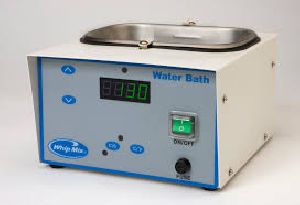
Water Bath
The electrically operated Single walled Rectangular Water Bath are made of thick stainless steel and feature constant water levels maintained inside them. For optimum performance, these also come complete with concentric rings having 75 mm dia, wire plugs and with suitable drainage facility. The bath machine also comprises thermostatic controller that allows better control of temperature levels with removable glass tray and stainless steel platform for drying of sections. Some of the applications these are used in include for sterilizing purposes. These Water Baths also come fitted with heating element for uniform heating throughout the system and finds usage in areas like medical institutions, research laboratories, agricultural institutions, bio-chemical industries as well as in many other industries. Application: 1.Water Bath Rectangular Single Walled is made of Heavy Gauge Stainless Steel with Concentric rings. 2.Water Bath Rectangular Single Walled fitted with Heating Element for uniform heating throughout. 3.To work on 220/230 Volts A.C. supply. 4.In medical institution and research laboratories. 5.Agricultural institution. 6.Bio-Chemical industries and many other industries.
...more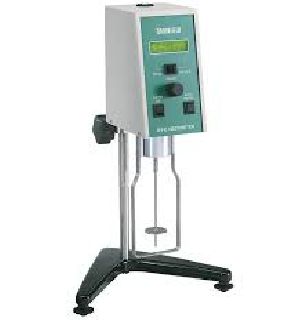
Viscometer
A viscometer (also called viscosimeter) is an instrument used to measure the viscosity of a fluid. For liquids with viscosities which vary with flow conditions, an instrument called a rheometer is used. Viscometers only measure under one flow condition. In general, either the fluid remains stationary and an object moves through it, or the object is stationary and the fluid moves past it. The drag caused by relative motion of the fluid and a surface is a measure of the viscosity. The flow conditions must have a sufficiently small value of Reynolds number for there to be laminar flow. At 20.00 degrees Celsius the dynamic viscosity (kinematic viscosity x density) of water is 1.0038 mPa·s and its kinematic viscosity (product of flow time x Factor) is 1.0022 mm2/s. These values are used for calibrating certain types of viscometers. Types of viscometers: 1.Falling ball viscometers 2.Glass capillary viscometers 3.Tuning fork vibration viscometers 4.Rotational viscometers 5.Portable viscometers 6.Viscosity cups 7.Consistometer 8.Viscometer Accessories A viscometer is used to measure the viscosity of a fluid under defined flow conditions. The different types of viscometry instruments have either the fluid stationary and let the object pass through the fluid or vice-versa. Hence these instruments measure the drag caused by the interaction between the fluid and the object surface. Technical parameter: Model : HZ-7001B Control temperature range : Normal temperature~200℃ Temperature display resolution : 0.01℃(0.1 ℃ common type of imported temperature controller temperature) Temperature control accuracy : ±0.3℃ Calibration accuracy : Mooney value ±0.5 Rotor speed : 2 rotation/ min ±0.02rotation/ min Torque range : Mooney value 0~200 Torque resolution : Mooney value 0.1 Print content : Date, time, temperature, Mooney scorch curve and MV,T5,T35,T3,T18,@15,@30 Power : 50HZ, ~220V±10%
...more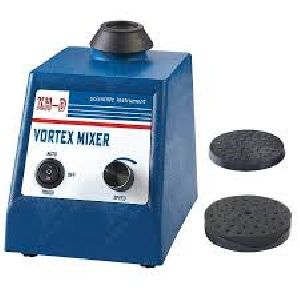
Vertex mixer
Description: These laboratory vortex mixers allows scientists to control the mixing speed by selecting from 200rpm for more gentle mixing to 2500rpm for vigorous agitation. Choose between `touch' on mode and continuous operation simply by pressing a button on the facia. Robust die-cast body avoids unnecessary movement during use. The ergonomic low profile design makes everyday vortexing comfortable for the user. Integral retort rod fixing allows vessels to be secured above the vortex action for long-term mixing. Features: Powerful vortexing for tubes up to 50ml Inst-Touch™ pressure activated operation "Mini Sized", less than 4 in. wide
...more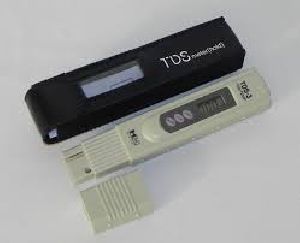
Tds Meter
Total Dissolved Solids (TDS) are the total amount of mobile charged ions, including minerals, salts or metals dissolved in a given volume of water, expressed in units of mg per unit volume of water (mg/L), also referred to as parts per million (ppm). TDS is directly related to the purity of water and the quality of water purification systems and affects everything that consumes, lives in, or uses water, whether organic or inorganic, whether for better or for worse. Common water filter and water purification systems: Carbon filtration: Charcoal, a form of carbon with a high surface area, adsorbs (or sticks to) many compounds, including some toxic compounds. Water is passed through activated charcoal to remove such contaminants. Reverse osmosis (R.O.): Reverse osmosis works by forcing water under great pressure against a semi-permeable membrane that allows water molecules to pass through while excluding most contaminants. RO is the most thorough method of large-scale water purification available. Distillation: Distillation involves boiling the water to produce water vapor. The water vapor then rises to a cooled surface where it can condense back into a liquid and be collected. Because the dissolved solids are not normally vaporized, they remain in the boiling solution. Deionization (DI): Water is passed between a positive electrode and a negative electrode. Ion selective membranes allow the positive ions to separate from the water toward the negative electrode and the negative ions toward the positive electrode. High purity de-ionized water results. The water is usually passed through a reverse osmosis unit first to remove nonionic organic contaminants.
...more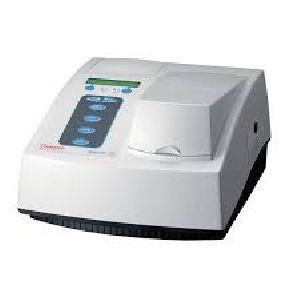
Spectrophotometer
A spectrophotometer is a photometer that can measure the intensity of light as a function of its wavelength. Single beam and double beam are the two major classes of spectrophotometers. Linear range of absorption and spectral bandwidth measurement are the important features of spectrophotometers. In Single Beam Spectrophotometers, all the light passes through the sample. To measure the intensity of the incident light the sample must be removed so that all the light can pass through. This type of spectrometer is usually less expensive and less complicated. The single beam instruments are optically simpler and more compact, znc can also have a larger dynamic range. In a Double Beam Spectrophotometer, before it reaches the sample, the light source is split into two separate beams. One beam passes through the sample and the second one is used for reference. This gives an advantage because the reference reading and sample reading can take place at the same time.
...more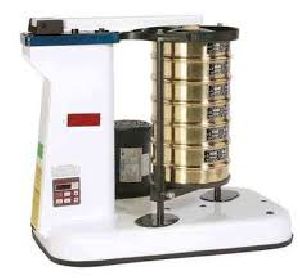
Sieve Shaker
A sieve analysis (or gradation test) is a practice or procedure used (commonly used in civil engineering) to assess the particle size distribution (also called gradation) of a granular material. The size distribution is often of critical importance to the way the material performs in use. A sieve analysis can be performed on any type of non-organic or organic granular materials including sands, crushed rock, clays, granite, feldspars, coal, soil, a wide range of manufactured powders, grain and seeds, down to a minimum size depending on the exact method. Being such a simple technique of particle sizing, it is probably the most common. We manufacture reliable electroformed sieves that determine particle size for our client’s most precision sensitive areas of the powder industry, which include diamond superabrasives, nuclear fuels, alumina, ceramic, metal, and even lunar powder materials. Our ultra precision sieves can be produced: With an opening size from three microns to 500 microns, at single micron increments With tolerances of as low as 0.5 microns Choices of opening shapes; square, round, slotted, hexagonal Standard inch and metric ring diameters Certified and shipped with a measurement histogram
...more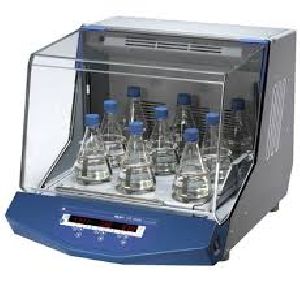
Shaker Incubator
Description: Shaking incubators is also know as environmental shakers, are frenquently used for cell culturing, cell aeration, and solubility studies Technical Specification of Shaker Incubator: Shaker Incubator W/O Cooling: Temperature Range : 5 °C above ambient to 60°C Temperature Accuracy : ± 0.2°C Shaker Incubator With Cooling: Temperature Range : 5°C to 60°C Temperature Accuracy : ± 0.2°Celsius Speed of Shaking : 40 to 200 Rpm. Speed of Indication : Digital Specification: Double walled construction . 3â€inch Thickness of PUF pannel Insulation providing constant temperature with humidity & reduced energy consumption. Motorized Blower chamber uses a unique air flow system which providing maximum uniform temperature & humidity condition in the chamber.Unique air flow guarantee quick recovery after door openings.
...more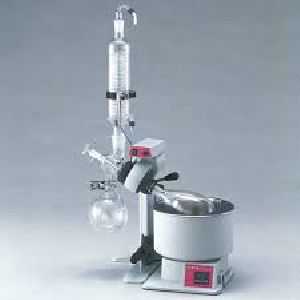
Rotary Evaporator
Description: Rotary Evaporator is essentially a thin film evaporator also called rotary vacuum evaporator. These features combined, renders rotary film evaporator to be ideally suited for evaporation of heat sensitive material. It is equally successful for evaporation of suspension in crystallization processes, drying of powder / granules etc. The main components of a rotary evaporator are: * A motor unit that rotates the evaporation flask or vial containing the user's sample. * A vapor duct that is the axis for sample rotation, and is a vacuum-tight conduit for the vapor being drawn off the sample. * A vacuum system, to substantially reduce the pressure within the evaporator system. * A heated fluid bath (generally water) to heat the sample. * A condenser with either a coil passing coolant, or a "cold finger" into which coolant mixtures such as dry ice and acetone are placed. * A condensate-collecting flask at the bottom of the condenser, to catch the distilling solvent after it re-condenses. * A mechanical or motorized mechanism to quickly lift the evaporation flask from the heating bath.
...more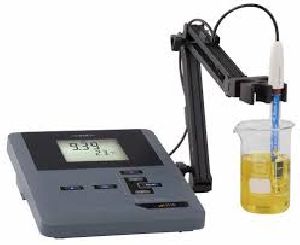
PH Meter
A pH Meter is a scientific instrument that measures the hydrogen-ion concentration (or pH) in a solution, indicating its acidity or alkalinity.The pH meter measures the difference in electrical potential between a pH electrode and a reference electrode. It usually has a glass electrode plus a calomel reference electrode, or a combination electrode.In addition to measuring the pH of liquids, a special probe is sometimes used to measure the pH of semi-solid substances. Types of pH meters: pH meters range from simple and inexpensive pen-like devices to complex and expensive laboratory instruments with computer interfaces and several inputs for indicator and temperature measurements to be entered to adjust for the variation in pH caused by temperature. Specialty meters and probes are available for use in special applications, harsh environments, etc. There are also holographic pH sensors, which allow pH measurement colorimetrically.
...more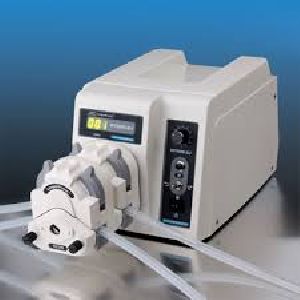
Peristaltic Pump
65,000 - 250,000 Per piece
Description: A peristaltic pump is a type of positive displacement pump used for pumping a variety of fluids. The fluid is contained within a flexible tube fitted inside a circular pump casing (though linear peristaltic pumps have been made). A rotor with a number of "rollers", "shoes", "wipers", or "lobes" attached to the external circumference of the rotor compresses the flexible tube. As the rotor turns, the part of the tube under compression is pinched closed (or "occludes") thus forcing the fluid to be pumped to move through the tube. peristaltic pumps work: 1. The peristaltic pump is based on alternating compression and relaxation of the hose or tube drawing the contents into the hose or tube, operating in a similar way to our throat and intestines. 2. A rotating shoe or roller passes along the length of the hose or tube totally compressing it and creating a seal between suction & discharge side of the pump, eliminating product slip. 3. Upon restitution of the hose or tube a strong vacuum is formed drawing product into the pump. 4. The medium to be pumped does not come into contact with any moving parts and is totally contained within a robust, heavy-duty hose or a precision extruded tube. 5. This pumping action makes the pump suitable for accurate dosing applications and has a pressure rating up to 16 bar (hose) and 2 bar (tube). 6. The high pressure hose has inner layer of 2-6 reinforcement layers and an outer layer, which allow higher working pressures and generate higher suction lifts than non re-enforced tubing. Applications: Peristaltic pumps are typically used to pump clean/sterile or aggressive fluids because cross contamination with exposed pump components cannot occur. Some common applications include pumping IV fluids through an infusion device, aggressive chemicals, high solids slurries and other materials where isolation of the product from the environment, and the environment from the product, are critical. It is also used in heart-lung machines to circulate blood during a bypass surgery as the pump does not cause significant hemolysis.
Type : Peristaltic Pumps
Weight : 10-20kg
Color : LIght White
Voltage : 220V
Condition : New
Power : 100-500W
Driven Type : Automatic
Pressure : Low Pressure
Brand Name : Labbro
Application : Fluid transfer
...more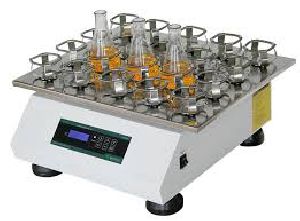
Orbital Shaker
Description: Analog orbital shakers are designed for a wide range of applications, including cell cultures that require accurate and reproducible results. They provide reproducible motion that is evenly distributed through the platform's entire surface. Additional applications include bacterial suspensions, staining/destaining, and general mixing. Operating features include variable speed microprocessor control that provides consistent, uniform mixing. An integrated analog timer can be set from 1 to 120 minutes. A powerful triple eccentric drive and brushless motor ensure reliable service in continuous duty and can handle loads up to 15.9kg (35lbs.). Shakers can run in cold rooms, incubators, and CO2 environments from 0 to 40°C (32 to 104°F). To avoid splashing or sample loss, a ramping feature slowly increases speed to the desired set point. The main advantage of this cradle system is that it can accommodate different sizes of vessel, a common requirement where shakers are used by different people in the laboratory.
...more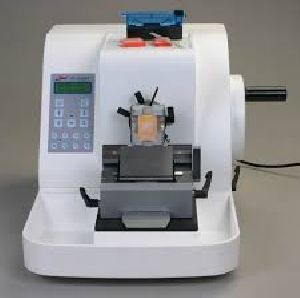
Microtome
A microtome (from the Greek mikros, meaning "small", and temnein, meaning "to cut") is a tool used to cut extremely thin slices of material, known as sections. Important in science, microtomes are used in microscopy, allowing for the preparation of samples for observation under transmitted light or electron radiation. Microtomes use steel, glass, or diamond blades depending upon the specimen being sliced and the desired thickness of the sections being cut. Steel blades are used to prepare sections of animal or plant tissues for light microscopy histology. Glass knives are used to slice sections for light microscopy and to slice very thin sections for electron microscopy. Industrial grade diamond knives are used to slice hard materials such as bone, teeth and plant matter for both light microscopy and for electron microscopy. Gem quality diamond knives are used for slicing thin sections for electron microscopy. Consumption/coverage: Microtomy is a method for the preparation of thin sections for materials such as bones, minerals and teeth, and an alternative to electropolishing and ion milling. Microtome sections can be made thin enough to section a human hair across its breadth, with section thickness between 50 nm and 100 µm. Microtomes are very heavy, weighing 40 to 60 pounds. This is to reduce vibration during microtomy, in which stability is critical during sectioning to prevent undulations (washboarding) in the paraffin sections. Daily cleaning from paraffin debris and yearly preventive maintenance will keep a microtome cutting optimally for many years. The main components of a rotatory microtome are described below. Although some microtomes have more bells and whistles, the standard microtome remains relatively simple to operate. 1.Microtome base plate or stage: A platform which has rails that secure the knife holder base. 2.Knife holder base: A part that anchors the knife holder to the microtome stage. The knife holder base can be moved toward or away from the block, but MUST be stationary and locked during microtomy. 3.Knife holder: This part is comprised of several components including the blade clamp that holds the blade, the knife tilt for adjusting the knife angle, and the face plate that guides that ribbons away from the blade and towards the operator. 4.Cassette clamp or block holder: Holds the paraffin block in place. Typically, the block moves up and down with each revolution while the blade is stationary. The block holder may have knobs that allow the user to manipulate the block face in various directions to bring the tissue in alignment with the blade. 5.Coarse handwheel: Moves the block holder either toward the knife or away from the knife. 6.Advancement handwheel: Turns in one direction and advances the block toward the knife at the specified microns. Most handwheels are equipped with a safety lock to prevent the wheel from releasing and having the block holder come down towards the blade while a block is inserted or removed. The safety lock should be used anytime the microtomist is not actively sectioning paraffin blocks. 7.Micron adjustment: Micron settings for section thickness can range from 1 to 60 microns on most microtomes. After becoming familiar with the major components of a microtome, we can examine the knife angles in detail.
...more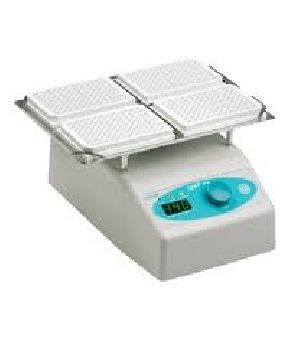
Micro Tube Shaker
Description:These microtube shakers are essential for any microbiology, chemistry, or molecular biology laboratory. Shakers provide orbital mixing and vortexing for samples within microcentrifuge tubes. Included platform holds up to 60 standard 1.5 to 2.0 mL tubes. Order adapters for smaller tubes and extra platform racks under “Accessories” below. Shakers are designed to withstand the stresses of continuous operation and are suited for use in cold rooms and incubators. They feature variable speed control and can be set for timed or continuous operation. Features: High-speed vibrational mixing action - ideal for microtitre plates Digital selection of speed Personal sized SSM5 for mixing 4 plates simultaneously Laboratory size SSL5 for mixing 8 plates simultaneously Built-in digital timer or continuous operation Accessories available for the mixing of microcentrifuge tubes
...more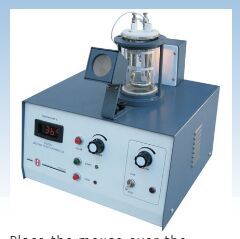
Melting Point Apparatus
Melting Points Apparatus to suit all users, the SMP11 with thermometer, is absolute for teach the students how to read a thermometer but also teaches phase changes. * Melting Point Apparatus is designed to calculate the MELTING point, BOILING point or FLOW point of an substance. *Sensitive PT-100 Temp. sensor is used to THE temperature changes more rapidly hence melting point determination is performed faster. Provision to set PRE Temperature. limit to approximately 15°C. below the expected Melting Temperature of the sample.
...more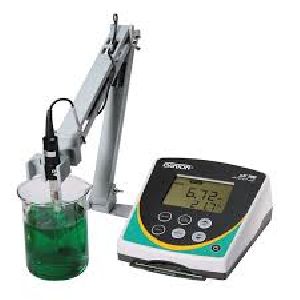
Ion Ph Meter
A Ion pH Meter is a scientific instrument that measures the hydrogen-ion concentration (or pH) in a solution, indicating its acidity or alkalinity.The Ion pH meter measures the difference in electrical potential between a Ion pH electrode and a reference electrode. It usually has a glass electrode plus a calomel reference electrode, or a combination electrode.In addition to measuring the Ion pH of liquids, a special probe is sometimes used to measure the Ion pH of semi-solid substances. Types of Ion pH meters: Ion pH meters range from simple and inexpensive pen-like devices to complex and expensive laboratory instruments with computer interfaces and several inputs for indicator and temperature measurements to be entered to adjust for the variation in Ion pH caused by temperature. Specialty meters and probes are available for use in special applications, harsh environments, etc. There are also holographic pH sensors, which allow Ion pH measurement colorimetrically.
...more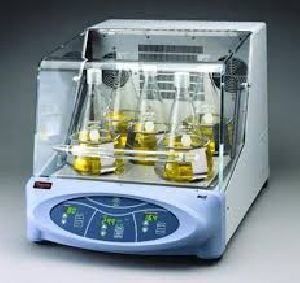
Incubating Orbital Shaker
Description: Incubating orbital shakers are designed for a variety of shaking and incubating applications such as bacteria suspensions, hybridizations and cell culture procedures. The units tray can be used as a platform for mounting Erlenmeyer flask clamps or test tube racks. Platform holds up to six 250 mL Erlenmeyer flasks or vessels up to 5.25 inch tall. • Variable speed microprocessor control provides consistent uniform mixing action • Permanently lubricated ball bearings & brushless DC motor for reliable continuous operation • 1 second to 160 hours time with audible alarm when time reaches zero • Easy to read LED displays for temp, speed and time allows view of all settings at once • Polycarbonate lid permits viewing of samples without disturbing internal temperature The incubator features smoked acrylic windows in the door and to both sides to allow easy visibility of the samples. The unit features a retractable platform. Under normal use the platform is locked in place but whilst accessing your samples the platform can be drawn forward out of the chamber to allow easiest access to samples at the back of the incubator. The SI500 also features a USB connection and dedicated software to enable long term monitoring of the incubator temperature, i.e. over weekends. A wide range of stainless steel accessory racks are available to hold 1.5ml, 15ml and 50ml sample tubes, the angle of the tubes can be adjusted up to 30°. Accessory racks are held to the orbiting platform by a patent pending Magnalock system, allowing quick coupling and de-coupling without tools
...more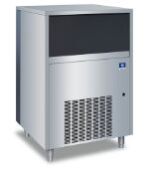
Ice Flaker Machine
manufacturers , designing latest technology & international standard. Flake Ice Machines used in laboratories worldwide in international standard quality and advanced manufacturing and designing technology, our units prove to be more truss table and strong flake ice makers available on the market today. These Flake Ice Machines.
...more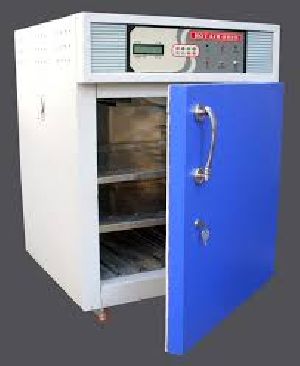
Hot Air Oven
Hot air ovens are electrical devices which use dry heat to sterilize. They were originally developed by Pasteur. It consolidates a heating system with fine air stream making uniform temperature because of characteristic convection inside of the chamber. The hot air with fumes and dampness streams out through a controlled ventilation system. In a perfect world utilized for preheating, sterilizing, drying, backing, aging etc. Usage: A complete cycle involves heating the oven to the required temperature, maintaining that temperature for the proper time interval for that temperature, turning the machine off and cooling the articles in the closed oven till they reach room temperature. The standard settings for a hot air oven are: 1.5 to 2 hours at 160 °C (320 °F) 6 to 12 minutes at 190 °C (374 °F) Polymer Modified Water based Rubberised Elastomeric Bitumen gel for Waterproofing and Protective Coa ....plus the time required to preheat the chamber before beginning the sterilization cycle. If the door is opened before time, heat escapes and the process becomes incomplete. Thus the cycle must be properly repeated all over. These are widely used to sterilize articles that can withstand high temperatures and not get burnt, like glassware and powders. Linen gets burnt and surgical sharps lose their sharpness.
...more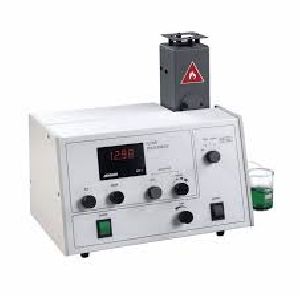
Flame Photometer
A photoelectric flame photometer is a device used in inorganic chemical analysis to determine the concentration of certain metal ions, among them sodium, potassium, lithium, and calcium. Group 1 and Group 2 metals are quite sensitive to Flame Photometry due to their low excitation energies. Parts of a flame photometer 1. Source of flame: A burner that provides flame and can be maintained in a constant form and at a constant temperature. 2. Nebuliser and mixing chamber: Helps to transport the homogeneous solution of the substance into the flame at a steady rate. 3. Optical system (optical filter): The optical system comprises three parts: convex mirror, lens and filter. The convex mirror helps to transmit light emitted from the atoms and focus the emissions to the lens. The convex lens help to focus the light on a point called slit. The reflections from the mirror pass through the slit and reach the filters. This will isolate the wavelength to be measured from that of any other extraneous emissions. Hence it acts as interference type color filters. 4. Photo detector: Detect the emitted light and measure the intensity of radiation emitted by the flame. That is, the emitted radiation is converted to an electrical signal with the help of photo detector. The produced electrical signals are directly proportional to the intensity of light. Applications: Flame photometer has both quantitative and qualitative applications. Flame photometer with monochromators emits radiations of characteristic wavelengths which help to detect the presence of a particular metal in the sample. This help to determine the availability of alkali and alkaline earth metals which are critical for soil cultivation. In agriculture, the fertilizer requirement of the soil is analyzed by flame test analysis of the soil. In clinical field, Na+ and K+ ions in body fluids, muscles and heart can be determined by diluting the blood serum and aspiration into the flame. Analysis of soft drinks, fruit juices and alcoholic beverages can also be analyzed by using flame photometry. Advantages: 1.Simple quantitative analytical test based on the flame analysis. 2.Inexpensive. 3.The determination of elements such as alkali and alkaline earth metals is performed easily with most reliable and convenient methods. 4.Quite quick, convenient, and selective and sensitive to even parts per million (ppm) to parts per billion (ppb) range.
...more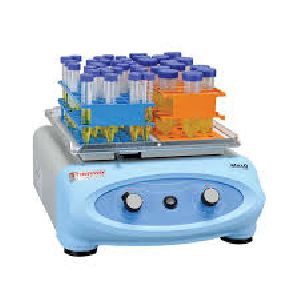
Dual Action Orbital Shaker
The reciprocating shaker provides gentle to vigorous agitation with variable 10–250rpm speed control and is ideal for extractions, mixing blood samples, and silver staining of polyacrylamide gels. This shaker offers reciprocating linear motion with an adjustable stroke length of 1.3–3.8cm (1/2–11/2") to mimic hand shaking of separatory funnels. The dual-action shaker provides gentle to vigorous agitation with variable 40–400rpm speed control and is ideal for growing bacteria, dissolution studies, staining of electrophoresis gels, and extractions. This shaker offers both reciprocating linear motion with a fixed stroke length of 1.3cm (1/2"), and orbital motion in a 1.3cm (1/2") diameter orbit. A control lever changes the shaking motion while unit is stationary or in operation. Features: Variable speed control allows gentle to vigorous agitation Built-in timer facilitates repeatable results Control lever changes the motion while the shaker is stationary or in operation. Shaking motion: back-and-forth, with fixed stroke angle of 0.4? (1.2cm) for shaking of separatory funnels, or fixed circular motion of 0.4? (1.2cm) for growing bacteria and yeast Can be used in incubators, warm rooms, environmental chambers and refrigerators Operates in temperature ranges of 4° to 40°C and humidity conditions of 20 to 80% noncondensing Timed (1 to 60 min.) or continuous Metal locking tab on speed control knob prevents increased or decreased speed if the knob is bumped Requires: Universal Platform (without clamps), or Dedicated Platform (with pre-installed clamps) Clamps
...more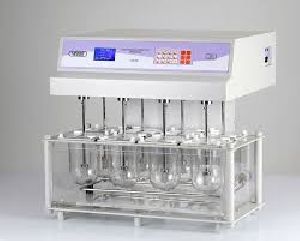
digital calorimeter
Description: Jai Lab Products are specialized manufacturer and supplier of Pharma Testing Instrument. For research and analysis to production and to quality control. our Pharma Testing Instrument and equipment are designed to meet required of International quality standards stimulate pharmaceutical companies to produce high quality products. Our in-house manufacturing potential, proven quality and reliable performance have established widespread confidence in the Panomex Brand. Different ypes of Pharma Testing Instrument: Dissolution Test Apparatus Disintegration Tester Bulk & Tapped Density Tester Tablet Hardness Tester Friability Tester Fluorometer Flame Photometer Karl Fischer Moisture Titrator Leak Test Apparatus Melting Point Apparatus Pyrogen Tele Thermometer
...more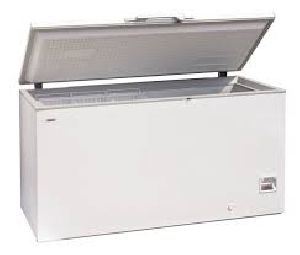
Deep Freezer
Description: Jai Lab Products manufacturers of Deep Freezer with premium quality as well as international standard.Deep Freezer is available in various capacities demands upon the customer requirements. Our Deep Freezer range is highly recognize for their easy operations and trouble free processing. Application: Used to prevent epidermic in Electronic and Chemical laboratories. Hospitals. Animal Husbandry. Blood Banks & Research Institutes Drugstore Pharmaceuticals Fields Restaurants. Controlling Of Temperature : Digital microprocessor based temperature indicator controller with display of 0.1oC. Controlling Minimum accuracy +2oC Display accuracy +0.5%, full scale. Class- A grade, PT-100 Sensor (RTD).
...more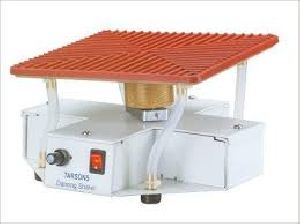
Dancing Shaker
1.Dancing shaker is designed to provide precise speed and tilt angles required for broad range of molecular and biological mixing application. 2.Dancing shaker are used for staining and destaining gel, hybridization procedure, hematology and blotting techniques. 3.Rocking shaker has a unique instant Tilt technology wherein the user can simply grip the platform with two hands and move it to the desired position without any tool and disassembly. 4.These are safe to be used in cold room and incubator. dancing shaker have a unique dual platform accessory which can be brought separately to double work surface. Features: Maximize the degree of mixing of the liquid in motion and 3D ∞ shape, accommodating up to 3 kg With Reciprocal, Seesaw, three-dimensional movements are the disadvantages of complementary Manner Orbital excellent mixing effect Optional embossing can be used reliably in a variety of container mats and rubber bands Applications: Gel staining / destaining Western blot reaction and washing All Ag-Ab ELISA reaction and response Useful in any type of mixing and reaction promotion
...more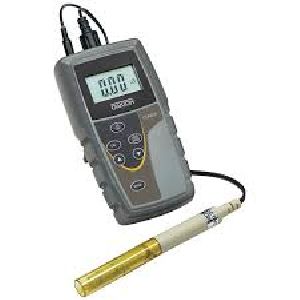
Conductivity Meter
A wide range of conductivity meters and conductivity controllers for a variety of environments and applications. Our low cost pocket conductivity testers and portable conductivity meters are ideal for field based conductivity measurement. Many models have an onboard memory to store and recall conductivity readings taken. For laboratory based applications, select from benchtop conductivity meters including leading brands such as Oakton, YSI, and Thermo Orion. Features of this style of conductivity meter can include a computer interface either by RS-232 or USB. Speak to our Applications Specialists for free technical support on conductivity measurement to help solve your application needs. Conductivity Meter & Measurement Selection Considerations When selecting a conductivity meter important features that need to be considered are : Autoranging: Meter automatically selects the most accurate range for measurement. There is no need to manually change the range. TDS Conversion Factor: When a solution does not have a similar ionic water content to natural water or salt water, then a TDS conversion factor is needed to automatically adjust the TDS readings Temperature Compensation: A cell with built-in temperature sensor allows the meter to make adjustments to the conductivity or TDS reading based on changes in solution temperature Adjustable temperature coefficients: Alcohols and pure water are affected by changes in temperature differently than typical samples. An adjustable temperature coefficient allows the user to compensate for the properties of the measured solution Adjustable cell constant: Adjusts the measurement to reflect use of a cell with a constant other than K = 1.0. Wide range meters may except cells between K = 0.01 and 10
...moreBe first to Rate
Rate ThisOpening Hours